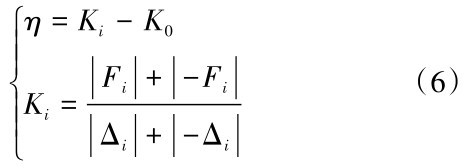作者简介:郭卫松(1986-),男,硕士,注册建造师,研究方向为土木工程与工程管理。E-mail:kuilaidunqyo@163.com
DOI: 10.13512/j.hndz.2023.03.20
备注
针对现有围护墙体抗冲击性能分析模型存在的分析效果差的问题,在考虑反复荷载的前提下,设计腹板开孔轻钢龙骨砌体围护墙体抗冲击性能模型。根据围护墙体的组成结构、材料性能,构建相应的有限元模型。根据地震数据生成反复荷载,模拟反复荷载的加载过程。设置位移、变形、位移延性和刚度退化量作为抗冲击性能的量化测试指标,通过有限元模型数据的提取与计算,得出最终的抗冲击性能分析结果。经过实验分析,发现设计模型的输出结果与实测结果基本一致,能够将数据偏差控制在0.1以下,即设计围护墙体抗冲击性能模型具有良好的分析效果。
In view of the poor analysis effect of the existing analysis model of impact resistance of retaining wall, the impact resistance model of light steel keel masonry retaining wall with web opening is designed under the premise of considering repeated load. According to the composition, structure and material properties of the retaining wall,the corresponding finite element model is constructed. According to the seismic data,the repeated load is generated to simulate the loading process of the repeated load. The displacement, deformation, displacement ductility and stiffness degradation are set as the quantitative test indexes of impact resistance. The final analysis results of impact resistance are obtained through the extraction and calculation of finite element model data. Through experimental analysis,it is found that the output results of the design model are basically consistent with the measured results,and the data deviation can be controlled below 0.1,that is,the design of the impact resistance model of the retaining wall has a good analysis effect.
















